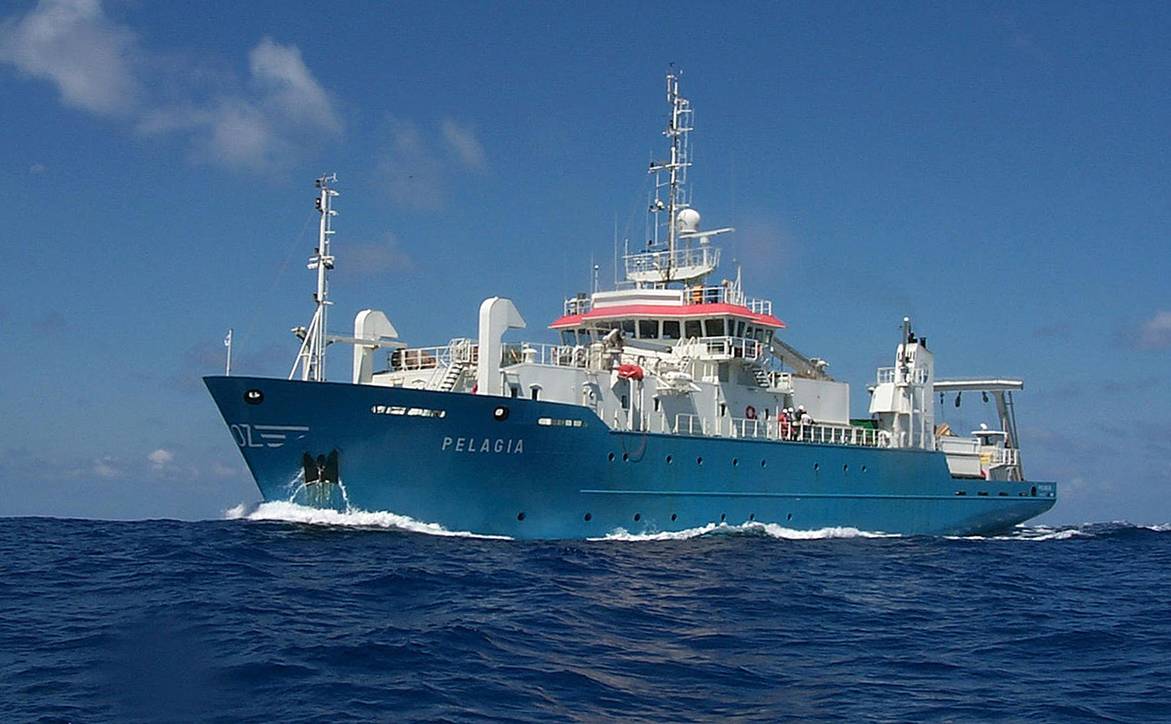PELAGIA 64PE351
- Area:
- Red Sea
- Time:
-
06.04.2012 - 20.04.2012
- Institution:
- GEOMAR
- Chief scientist:
- Ali Aidaroos
Following the natural N-S nutrient gradient featured by the Red Sea along the central rift axis, RV Pelagia cruise 64PE350 targets food web structure and biodiversity of plankton. The research to be performed during this cruise is part of the cooperative research project Nutrient gradients in the Red Sea, a component of the Jeddah Transect Project, carried out by GEOMAR and the Faculty of Marine Sciences, KAU, Saudi Arabia.
Benefitting from access to research areas which could not be approached during previous (land-based) expeditions to the Red Sea, the participating geologists and coral physiologists from GEOMAR and KAU will further contribute to the multidisciplinary outcome of leg b. By retrieval of living and non-living samples of food web components from complementary sampling gear (CTD/water sampler, nets) for traditional microscopy, chemical-taxonomic and biogeochemical analyses, the present study provides the first detailed trophodynamic description of offshore Red Sea zooplankton.
The planned sampling strategy aims at evaluating the links between chemical-oceanographic information and stoichiometric criteria of nutrients (Si, N, P) to plankton biodiversity and trophodynamics, and assessing expected correlations between natural nutrient gradients, particulate organic matter composition (macronutrients) and the quality and quantity of food transported from primary producers to higher trophic levels such as fish. This includes a quantitative chemical-taxonomic estimation of autochthonous and mixotrophic phytoplankton organisms via fingerprinting of HPLC-derived accessory pigment composition, as well as an enumeration of picophytoplankton and bacteria from the microbial food web by flow cytometry. After phytoplankton and zooplankton have been collected using a series of different plankton nets (Apstein, IOS, WP2, Multinet), plankton samples will used for determination of 1) biodiversity, 2) biomass, 3) abundance as well as 4) the description of daily vertical migration, and 5) genetic analysis including DNA barcoding. Carbon and nitrogen stable isotope analysis (SIA) will be performed on zooplankton sorted from life samples onboard. Using Acartia sp. as a model organism, it is planned to compare egg production rates of this copepod species at large spatial scales.
Acoustic profiling (ship-based ADCP) of the concentration of suspended particles together with CTD/ water profiles aims at supplementing the understanding of zooplankton abundances, depth-dependent and at large spatial scales across the Red Sea. Seismic profiling is planned for the whole cruise for seafloor mapping to increase our bathymetric dataset. Materials will be dredged for geological analysis as well as taxonomic and genetic analysis of samples of opportunity. The manned submersible JAGO will be deployed at selected sites to obtain coral, sponges and other benthic organisms for measuring physiological parameters, such as the determination of photosynthetic responses to changes in light intensity of selected coral species, taxonomy, and food web analysis.



